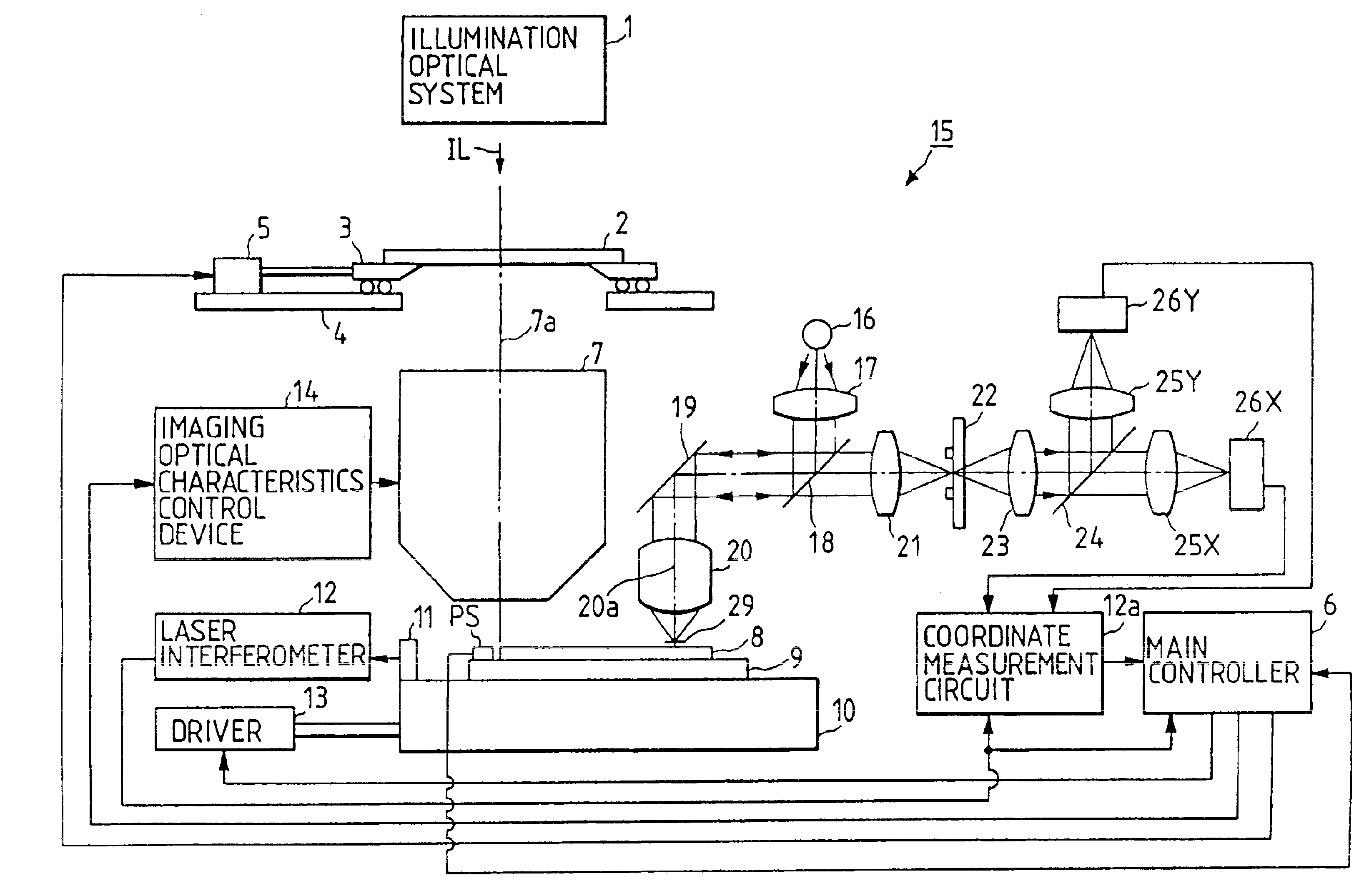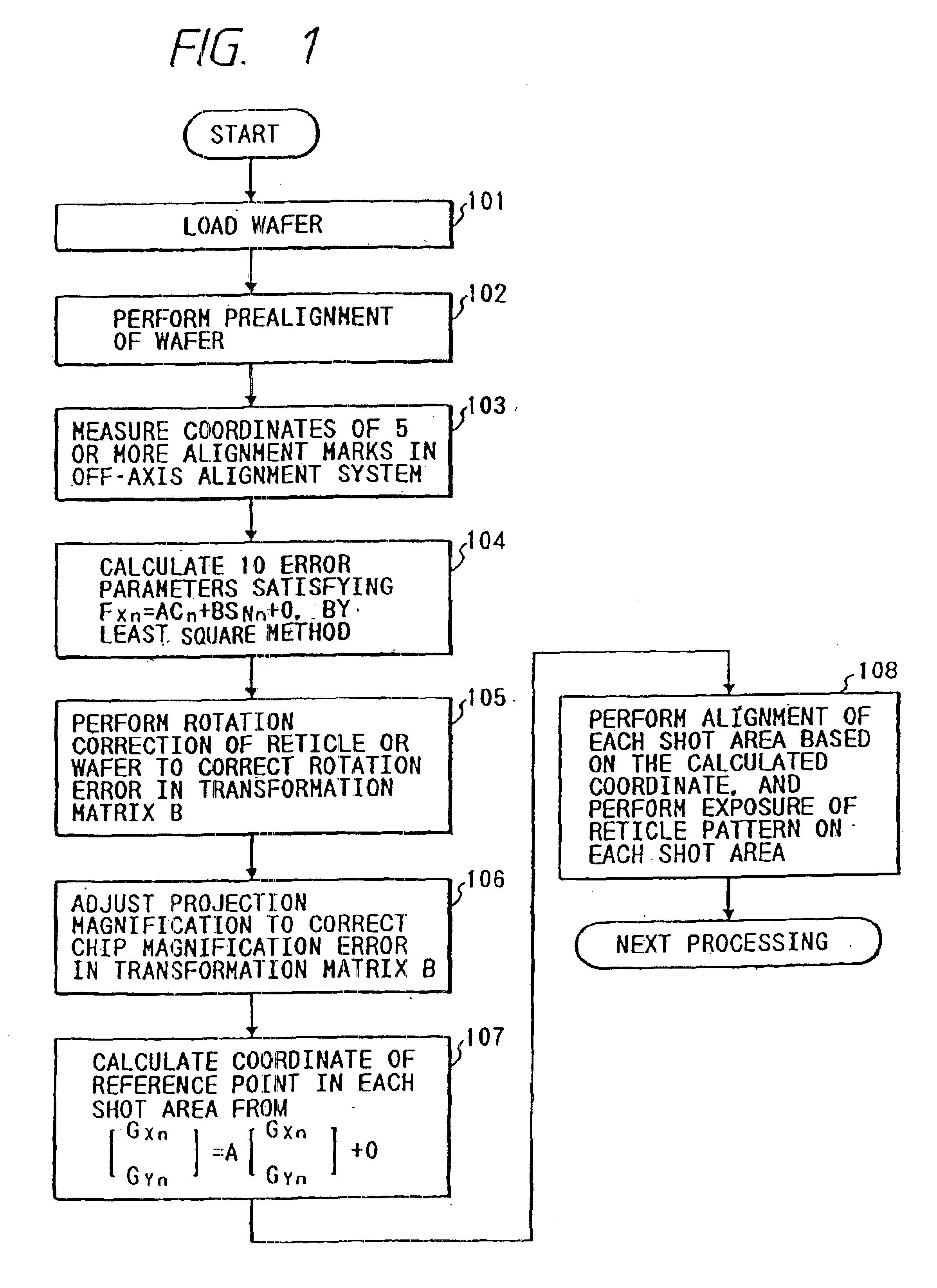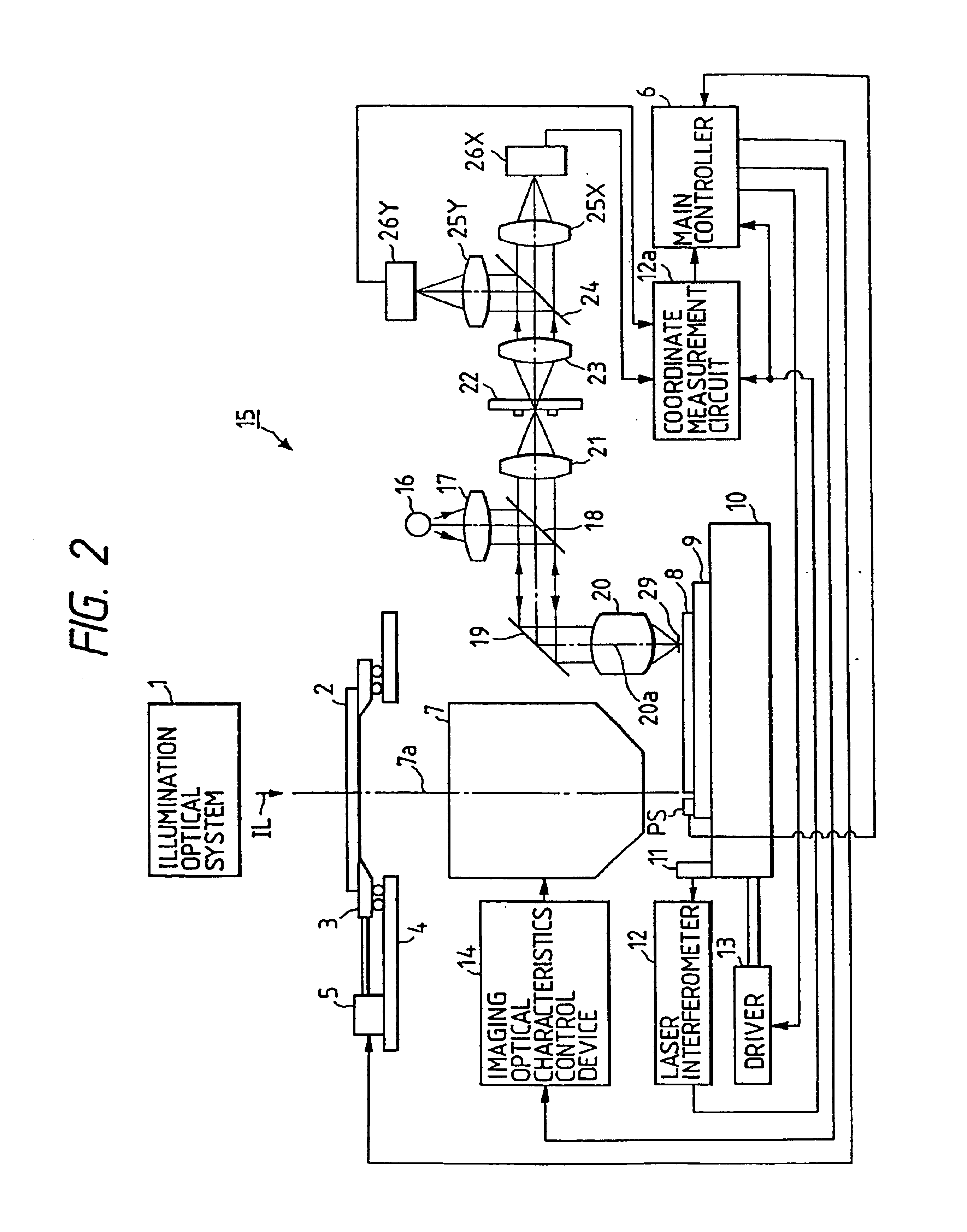Alignment method and apparatus therefor
- Summary
- Abstract
- Description
- Claims
- Application Information
AI Technical Summary
Benefits of technology
Problems solved by technology
Method used
Image
Examples
first embodiment
Now, a second preferred embodiment of the present invention will be described. The difference from the first embodiment is only the structure of a model equation for calculating the arrangement coordinate value of each shot area (chip pattern) on the wafer.
Although the coordinate value (FNXn, FNYn) on the stage coordinate system (X, Y) of the alignment marks is expressed in the equation (7) in the first embodiment, in this embodiment, the coordinate value (FNXn, FNYn) is expressed from the equations (3) and (5), as follows: [FNXnFNYn]=[Rx-Rx·(W+θ)Ry·θRy]{[CXnCYn]+[SNXn′SNYn′]}+[OXOY](15)
When the equation (15) is rewritten by utilizing the four parameters rx, rY as expressed in the equation (8), it becomes as follows: [FNXnFNYn]=[1+Γ x-(W+θ)Θ1+Γ y] [CXnCYn]+[1+γ x-(w+θ)θ1+γ y] [SNXnSNYn]+[OXOY](16)
When the two-dimensional vector is deemed to be the matrix of 2 lines×1 row, the equation (16) can be rewritten by the coordinate transformation equation having the following t...
PUM
 Login to View More
Login to View More Abstract
Description
Claims
Application Information
 Login to View More
Login to View More - R&D
- Intellectual Property
- Life Sciences
- Materials
- Tech Scout
- Unparalleled Data Quality
- Higher Quality Content
- 60% Fewer Hallucinations
Browse by: Latest US Patents, China's latest patents, Technical Efficacy Thesaurus, Application Domain, Technology Topic, Popular Technical Reports.
© 2025 PatSnap. All rights reserved.Legal|Privacy policy|Modern Slavery Act Transparency Statement|Sitemap|About US| Contact US: help@patsnap.com



